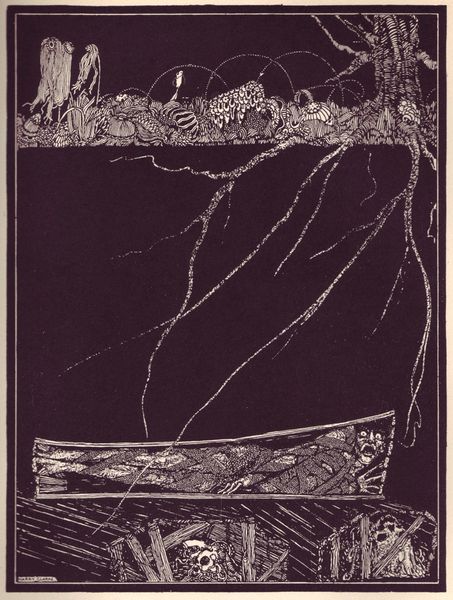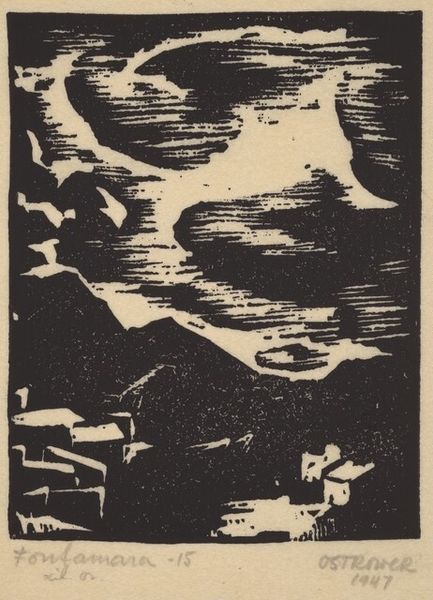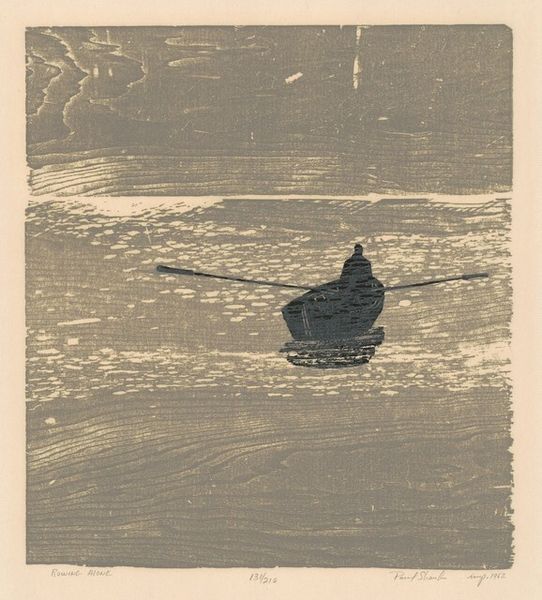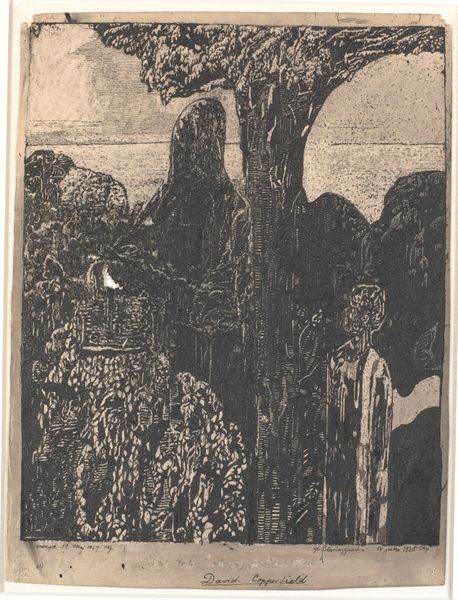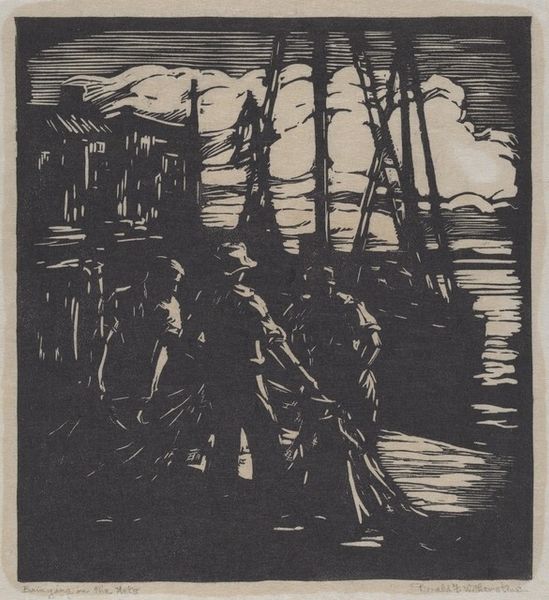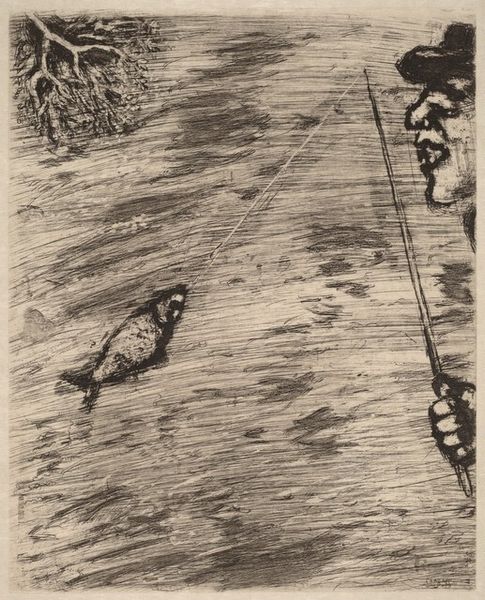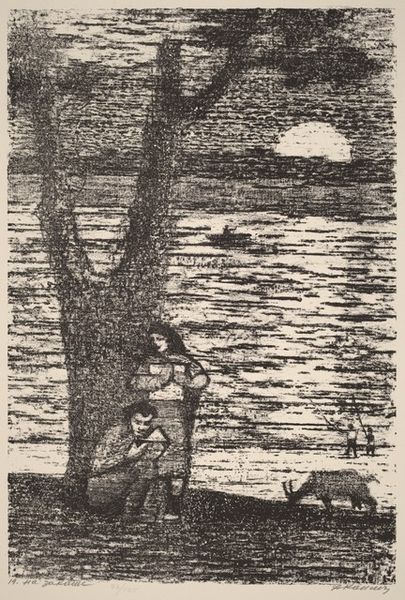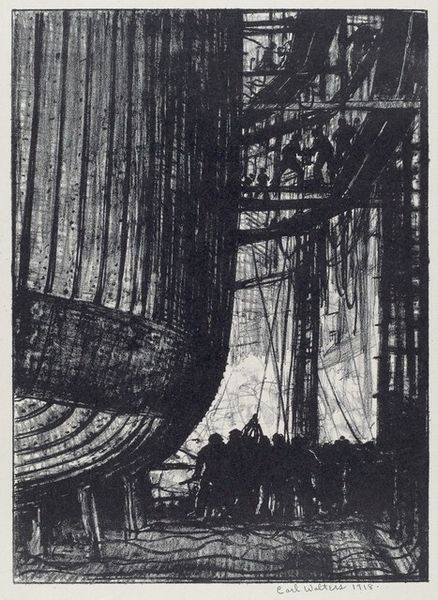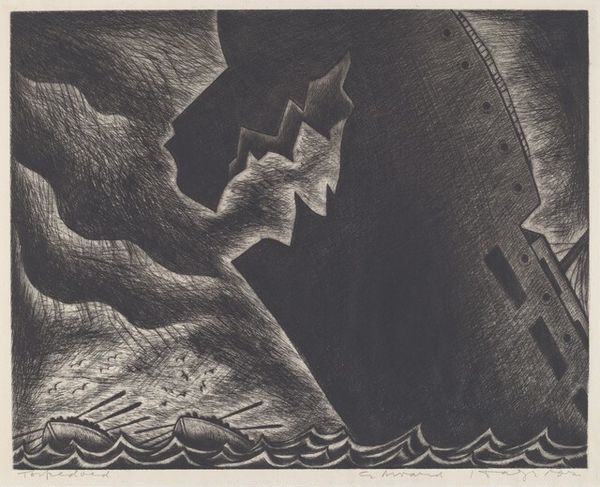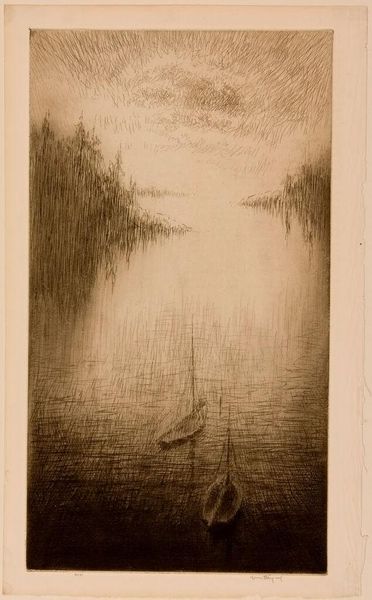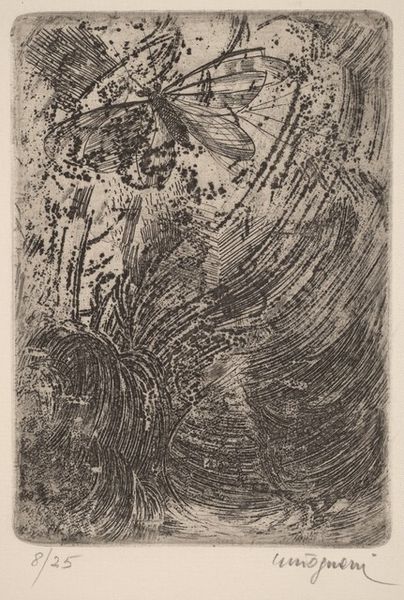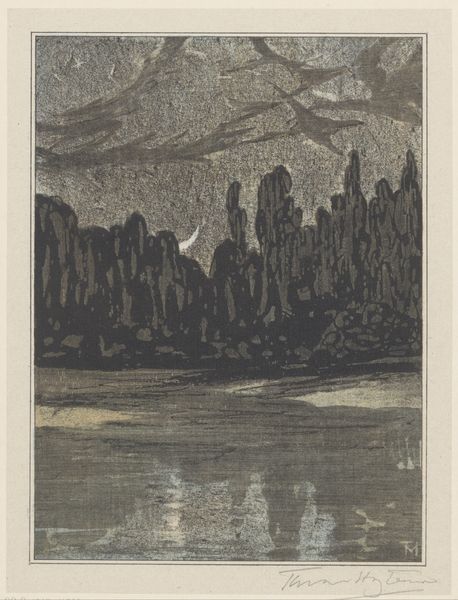
drawing, print, linocut, etching, woodcut
#
drawing
#
narrative-art
# print
#
linocut
#
etching
#
landscape
#
etching
#
linocut print
#
woodcut
Dimensions: image: 15 1/2 x 13 in. (39.37 x 33.02 cm) sheet: 19 11/16 x 15 1/8 in. (50.01 x 38.42 cm)
Copyright: National Gallery of Art: CC0 1.0
Editor: This is Victor Delhez’s “The Miraculous Catch of Fish,” from around 1936. It’s a print, possibly a linocut. The dramatic contrast between light and shadow gives it a really intense, almost unsettling feel. How do you read the cultural significance of this image? Curator: That intensity definitely reflects the socio-political anxieties of the time. The 1930s were a period of global economic depression and rising political instability, and religious imagery often provided solace, or sometimes a critique of prevailing conditions. Consider the title – a direct reference to the New Testament. How might Delhez be using this biblical story in the context of the 1930s? Editor: It’s interesting you point that out! The figures on the boat do look… almost desperate, struggling. So the "miracle" might be speaking to a collective desire for hope during times of struggle? A yearning for something beyond their immediate reality. Curator: Precisely! The stark contrast and the somewhat crude, powerful lines emphasize a feeling of struggle and uncertainty. Notice how the landscape dwarfs the figures, and how that darkness looms over the narrative, reminding the viewer of the social realities, such as poverty, labor movements and other socio-political trends that underpin the art produced in that era. How does knowing about the artist’s biography – for example, did he belong to particular artistic movements? – change your interpretation of it? Editor: I didn't know much about the artist, so this makes me think about it quite differently, that there may be a connection between Delhez's own history or background and how that plays a role in how he wanted viewers to approach it, and possibly use it as a social commentary. Curator: Yes, the power of the image exists within those dialogues and the politics of visuality that create meaning and history. Thanks for considering with me, the historical narratives embedded within this piece!
Comments
No comments
Be the first to comment and join the conversation on the ultimate creative platform.
